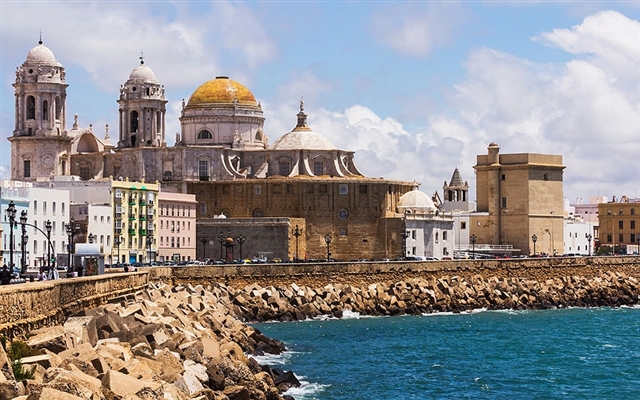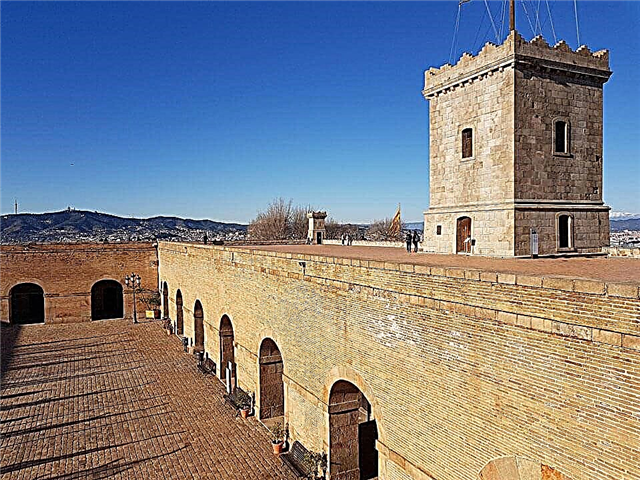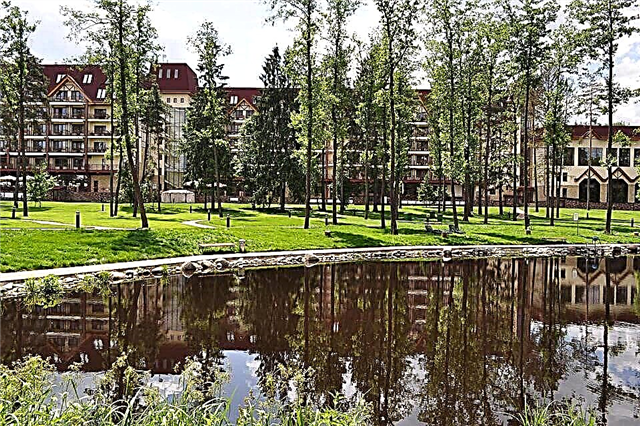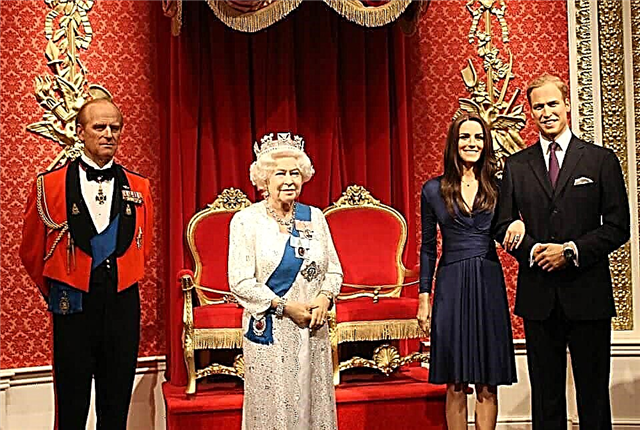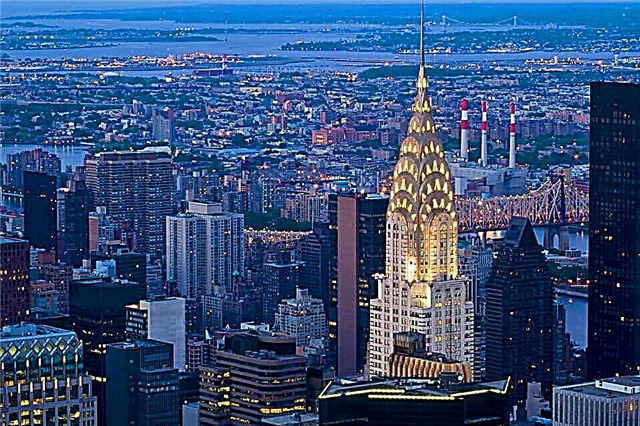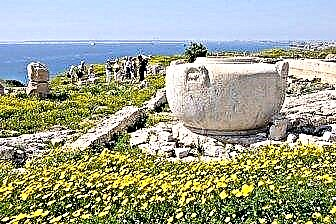Milan is an incredible city with a rich history and unique architecture. Its diversity is especially surprising. It is the capital of world fashion, the financial heart of Italy, and medieval cultural monuments. The sights of Milan will not leave anyone indifferent. The city remembers and honors its centuries-old history, but at the same time looks confidently to the future. Every year it is visited by millions of tourists, and everyone finds here something that will resonate precisely in his soul. It is worth coming here once, and you will want to come back again and again. Our route through the city includes the most delightful and popular places: from the Duomo to the Naviglio Grande canal. We will tell you where to go and what to see first.
Duomo Cathedral

The Cathedral of the Nativity of the Virgin Mary, or Duomo (that is, "Cathedral"), as the Milanese call it, stands in the very center. All the ancient roads of the city lead to the temple, as it should be - this is perfectly visible on any map of the city or from above, from the roof of the cathedral. There is no person in the world who would never have heard of this amazing structure.
The cathedral began to be erected at the end of the XIV century on the site of the ancient Celtic sanctuaries, but most of the work on the completion of the facade was carried out already in the XIX century by order of Napoleon. The facade is decorated with spiers, columns, towers and sculptures. The most majestic is the 4-meter-high bronze figure of the Virgin Mary, lifted up on a 100-meter spire over the city.
Inside, stained glass windows of the 15th century, skillful painting, an unusually realistic sculpture of St. Bartholomew, tombstones of saints and the main treasure of the temple, kept above the altar, are preserved, is a nail from the crucifixion of Christ. There is a fee to enter the cathedral. If you are going to take pictures inside the temple, then you need to buy a special bracelet. The three-level roof of the Duomo is the best observation deck in the city. The roof can be accessed by stairs or an elevator.
Duomo Square

Cathedral Square is the heart of the city. The most important sights are collected there, there is always revival and very beautiful. The square dates back to the XIV century. The order for its foundation was given by an important dignitary, Azona Visconte. The perimeter buildings were designed by the most famous architects. In the second half of the 19th century, the square underwent a large-scale restoration, on which the architect Giuseppe Mengoni worked.
The main building is the Milan Cathedral, which defines the atmosphere of this place. It was built from the end of the 14th century to the beginning of the 19th century. The high spire of the building is crowned with a gilded sculpture of the Madonna. Near the cathedral, the gallery of Victor Emmanuel II draws attention. This is one of the very first shopping galleries to appear in Europe. Opposite is a majestic and discreet building - the Royal Palace. But this is not the only palazzo in the square. Here you can find buildings from different eras - the Archbishop's Palace, Palazzo del Orologgio, Palazzo Carminati.
Gallery of Victor Emmanuel II

It was named after the king of the united state of Italy. Emmanuele II personally attended the opening of the passage in 1877. The architect D. Mengoni, who designed the building, died a little earlier than this grandiose event, crashed when falling from the scaffolding. This building - the pride of citizens - has been attracting tourists from all over the world for more than one century. The gallery was erected in the form of a Latin cross. It has four exits, each of which represents a continent (excluding Australia).
The roof of the building is made in an innovative style for that century - a luxurious glass dome, framed with iron. In the center of the gallery, the Italian coat of arms depicting a bull is laid out in mosaics on the floor. It is believed that if you step on his groin with your heel and twist 3 times, you will inevitably become lucky and rich. This arcade has long been a permanent venue for fashion shows, concerts and exhibitions.
We recommend unusual excursions from local residents in Russian:
for 1-2 people or € 35 per person if there are more of you)
Monument to Leonardo da Vinci

Walking straight through the gallery, you will find yourself near the Teatro alla Scala. But about him a little later. And in the middle of the square you entered, the majestic monument of Leonardo da Vinci rises. Da Vinci is one of the most amazing and incredibly talented figures bestowed on the world by the 15th century. He excelled in many arts and sciences, from painting to anatomy.
Even notes in his diaries Leonardo wrote in a mirror image (without a mirror, of course). Like any genius, he had followers. The monument consists of several figures. On the pedestal is a sculpture of the scientist himself, at its base are placed his most famous students: C. de Sesto, D. Boltraffio, A. Salaino and M. d'Ojono.
La Scala theater

As promised earlier, we return to the world famous La Scala opera house. Many people mistakenly believe that it got its name from the Italian word Scala ("ladder"). In fact, it was built on the site of the church of Santa Maria della Scala, which is where the name comes from. The theater was designed by the architect D. Piermarine. The building itself looks rather inconspicuous against the background of other Italian buildings, and for that Piermarine had his own reasons.
Firstly, it was urged on by the Milanese aristocrats who sponsored the construction, and secondly, the building was surrounded by ordinary residential buildings. So the designer decided not to spend extra time and budget on the formation of the facade. Thanks to this decision, La Scala was rebuilt in an unprecedentedly fast time frame - 2 years. Despite its inconspicuous appearance, inside the building greets its visitors with the richest decoration and delightful acoustics. The fame began right in this place: Salieri, Verdi, Puccini and other now recognized composers.
Mercanti Square

From La Scala, head along the Via Santa Margarita past the Palace of the Legal Advisers to Piazza Mercanti. In the old days it was possible to enter the square from 6 aisles, each of which was named after the craftsmen's guild, located on them, for example, the street of jewelers. This place is not included in the compulsory tourist routes, and guides often bypass the square. But attentive tourists will definitely find time to explore this medieval gem of Milan.
Mercanti Square is not large; significant city events took place on it - meetings of the guild of merchants, court sessions, and so on. When visiting it, you should pay attention to the Palace of Lawyers, built in the Renaissance style popular at that time. Another architectural masterpiece is the Palazzo della Ragione, built in the Middle Ages. Previously, justice was administered here. Opposite the palazzo, attention is drawn to the scuole Palatine, created in the first half of the 17th century.This square traditionally houses a book market, where you can even find rare editions.
Piazza Cordusio

Passing Piazza Cordusio, you will find yourself at the beginning of Via Dante. The unique elliptical square was created at the end of the 19th century. Three buildings, the facades of which overlook it, have an amazing concave shape, which gives an interesting shape to the square. Six roads intersect at this point. Starting your tourist route from here, you can easily get to the most significant places in the city. Cordusio is often referred to as the "square of banks" - here are the headquarters of large financial institutions.
The square got its name from the words Curia Ducis, which translates as the Ducal court. The court building was built here by the king of the Lombard tribe. Another interesting fact from the history of Cordusio - it was here in 1893 that the first electric tram was launched. The city dwellers were so interested in this type of transport that almost 10 thousand tickets were sold on the very first day of its operation. The tram has survived to this day and can be seen in the Science Museum.
Via Dante

To feel the atmosphere of the ancient city, travelers can stroll along Via Dante, one of the most beautiful pedestrianized streets. It got its name in honor of the famous poet Dante Alighieri. More recently, tram rails were laid along it and public transport drove, but then the authorities gave the street to pedestrians. The houses on it were built in the 18th-19th centuries, they are perfectly preserved.
The city authorities made another wise decision by banning all kinds of new buildings on Via Dante. Thanks to this, the street has been preserved as it was several centuries ago. Now tourists can not only enjoy walking through the ancient city, but also go to one of the theaters located on Via Dante. The Piccolo Theater (Little Theater) is especially interesting. He was awarded the title of Theater of Europe. The first play that was staged in it was "At the Bottom" by Maxim Gorky.
Milan Cathedral: ticket with access to terraces - 16 €
Milan Cathedral and Terraces by Elevator: Fast Track Ticket - 25 €
Sightseeing bus tour - 48 h, 72 h or 1 day - from 22 €
Serravalle Designer Outlet: round trip bus - 20 €
Monument to Giuseppe Garibaldi

From Dante Street, you will go directly to the Cairoli Square, where you will find the monument to D. Garibaldi. He was the greatest commander who fought for justice, and is now the national hero of Italy. Throughout his life, Giuseppe, as a true patriot, waged a war for the unification of Italy, torn between strife and occupation. Ironically, one of the streets adjacent to the square is named after the conqueror of Italy - Bonaparte. However, it rests against the monument to the liberator - Giuseppe Garibaldi. From here you can see the next attraction, to which we will move on.
Sforza castle

To many of our compatriots, the castle resembles the Kremlin located in Moscow. The towers and battlements are similar. This is not surprising, because it was the Sforza Castle that served as the prototype for the creation of the Kremlin. The castle was built in the XIV century by the Duke of Visconti. He was the owner of this structure for a short time. The duke was overthrown during the uprising, and power passed to Francesco Sforza. The castle was badly damaged, and Sforza began to restore it.
His descendants continued to improve the structure and adorn it with rich finishes. The history of Russia also influenced the castle. It was stormed by Suvorov soldiers during the Italian campaign. Many events left their mark on the appearance of the building - the arrival of Napoleon, the capture by Austrian troops, the Second World War. Now it has been completely restored and is accessible for tourists. Now, on the territory of the castle, one of the most popular museums is located, which all travelers consider it their duty to visit. Here art connoisseurs enjoy the masterpieces of Michelangelo, Leonardo da Vinci and other masters of the Italian school.
Sempione Park

Among the stone buildings of the city in the immediate vicinity of the Sforza Castle are the green lungs of the city - the Sempione Park. It was developed by the Italian Alemagna relatively recently - at the end of the 19th century. The park has been preserved in its original form and occupies a significant area - almost 50 hectares. This favorite walking place of the city's residents attracts visitors with its amazing beauty. An extensive water system of ponds and channels, manicured lawns, a huge number of blooming roses, fountains and sculptures make the Sempione Park very popular.
The reservoirs are inhabited by ducks, swans, turtles. There are areas for outdoor activities. Bicycle tracks, playgrounds for children are equipped. Fans of football and frisbee will also find a place for their leisure here. Not far from the Sforza castle, in the park, there are the remains of a gate that led to the castle during the time of Visconti. They date back to the XIV century. Previously, the park was home to outbuildings and land that belonged to the owners of the Sforza Castle.
Recommended hotels:
- Hotel Da Vinci 4 * - located in a park with an area of 8,000 sq. m., 150 meters from the railway station Bruzzano, free Wi-Fi
- Ibis Milano Centro 3 * - 350 meters from the railway station and the Repubblica metro station, Lineauno bistro restaurant, 24-hour lounge bar overlooking the garden
- Delle Nazioni Milan Hotel 3 * - 5 minutes walk from the central railway station, free bike rental, continental breakfast
- B&B Hotel Milano San Siro 3 * is a good budget option, a 5-minute walk from the San Siro Stadium metro station, a drive to Sempione Park takes 10 minutes
- Hotel Ritter 3 * - within walking distance from the Sforza Castle, just 100 meters from the metro, free Wi-Fi
Church of Santa Maria delle Grazie

In the very center stands the symbol of Italian Renaissance art - the Church of Santa Maria delle Grazie. It was built at the end of the 15th century as part of the Dominican monastery. The interior of the church was divided into two halves: the first was accessible to parishioners, and the second was closed, and only monks could enter. But the main value of the basilica is the fresco of the great Leonardo "The Last Supper" stored in the refectory. In August 1943, she miraculously survived the bombing of the Allied forces.

The parishioners surrounded the wall with the fresco with sandbags, thanks to which it has been preserved. However, the consequences of the war, time and natural factors have led to the fact that the fresco is now far from its original state. To preserve it, those who wish are allowed to visit it only by appointment by phone. To see the work of the Master, you must sign up for an excursion by calling 02 92 800 360 from Monday to Saturday from 8.30 am to 6.30 pm.
Half an hour before the start of the tour, you need to come and buy a ticket or do it online. Of those who wish, they form groups of 25 people and are allowed to stay in the refectory for no more than 15 minutes. This is possible from Tuesday to Sunday from 8.15 to 18.45. The entrance to the territory of the church itself is free. It is open daily from 7 am to 7 pm, with a break in the afternoon from 12 to 3 pm.
Basilica of San Lorenzo Maggiore

This is perhaps one of the oldest churches in Europe. Many walls were erected in the 4th century on the site of ancient Roman pagan temples. It suffered a lot from fires, was often rebuilt and was finally restored in the 16th century.
The main attraction is the Sant'Aquilino Chapel. It was built in the 5th century as the tomb of the daughter of Theodosius I. The chapel is richly decorated with mosaics depicting Jesus and the apostles. The relics of Saint Aquilino and the Martyr Natalia are also kept here. The Basilica is also called San Lorenzo Colonne because of the twelve Corinthian columns that stand in front of it.
They also belong to pre-Christian buildings and may have been intended for the construction of an ancient temple or baths.On the square in front of the church there is a monument to Emperor Constantine, whose name is associated with the end of the persecution of Christians and the beginning of the Christian era in the Roman Empire. The temple is open every day, from Monday to Saturday from 8 to 18.30, and on Sundays from 9 to 19 hours.
If you are planning a trip from Milan, we recommend the flixbus.ru service. On the website you can buy tickets online until:
- Bologna for 699,00 ₽
- Venice for 849,00 ₽
- Bergamo for ₽499.00
- Verona - 569,00 ₽
Basilica of St. Ambrose

Saint Ambrose is considered the protector of Milan. He was born here, and in 379 he founded a church in memory of the holy martyrs Protasius and Gevrasia. After the death of the priest, she received his name. The old basilica has not survived. In the 9th century, a new one was built in its place, which was rebuilt again in the 12th century. It was then that she acquired her final appearance and features characteristic of the Romanesque style. The church kept the relics of St. Ambrose, to which pilgrims came from all over Italy. It was once the main cathedral of the city.

The entrance to the basilica is through an atrium surrounded by columns. Each has relief images illustrating the struggle between God and the Devil. One of them has small round holes - according to legend, these are traces of the Devil's horns. During the fight, he hit them into the column. Tradition claims that, putting your ear to the column, you will hear his whisper. Inside the church, an altar of the 9th century made of gold has been preserved, on its front side there are scenes from the Gospel, and the other is decorated with images telling about the life of St. Ambrose.
In the chapel of San Vitorrio, under the dome, you can see a gold mosaic made in the 5th century. The main shrines of the temple are the relics of the first Milanese great martyrs Gevrasius and Protasius and Ambrose himself. They are kept in a silver sarcophagus in the main crypt. In addition, the burials of Louis II and the sarcophagus with the remains of the 4th century Roman commander Stilicho are also valuable. The entrance to the church is free from 8.30 to 18.30.
Pinakothek Brera

The Pinacoteca Brera is one of the best art galleries in Italy. Here is a collection of masterpieces of Italian and European painters of the XIV-XVII centuries. The Pinakothek is located in a 16th century palazzo. In the 18th century, Maria of Austria founded a gallery here. It reached its peak under Napoleon. He was going to turn the city into the capital of the European Empire, so he ordered to collect the best examples of painting here.
Here you can see the works of Raphael, Michelangelo, Piero della Francesco, Caravaggio, Rembrandt, El Greco and other artists, ancient icons are also kept here. The main treasure of the gallery is the famous work of Raphael "The Betrothal of the Virgin". The first floor of the palace houses the Milan Academy of Arts. In addition to the art gallery and study rooms, the Pinakothek has its own botanical garden and observatory. The Pinakothek is open every day from 8.30 am to 7.15 pm.
On Thursday, the visiting time is extended to 22 hours. The day off is Monday. The gallery is also closed on holidays - December 25, January 1 and May 1.
Ambrosian Pinakothek

Archbishop Federico Borromeo of Milan was a great patron of the arts and sciences. He collected ancient manuscripts from Greece, Syria, European countries and in 1602 decided to build a library. In 1609, the Ambrosian Library was opened to all comers. Under her, the archbishop ordered in 1618 to establish the Pinakothek and the Academy of Arts. The basis of the art gallery was made up of sculptures and canvases that were in the personal collection of the archbishop.
Later, it was supplemented by the most famous works of Italian and European artists. Today in the Pinakothek you can see the autographs of Virgil, Aristotle, the manuscripts of Leonardo da Vinci: his drawings, diagrams - the famous "Codex Atlanticus". In addition to manuscripts, the gallery also contains artwork by Leonardo, as well as canvases by Raphael, Caravaggio, Bruegel, Botticelli, Titian, Durer and other artists.
The gallery is open from Tuesday to Sunday from 10 am to 5.30 pm. It is closed on Monday and on holidays: January 1, Easter, May 1 and December 25. Photography and video filming is prohibited in the Pinakothek. But building facades and courtyards are allowed to be removed.
Museum of Science and Technology Leonardo da Vinci

Even people who are completely far from scientific research and technical projects can find here a lot of interesting things for themselves. The museum is located in the premises of an old monastery, and some of the exhibits are located right in the open air. Of great interest is usually the pavilion, which presents the inventions of Leonardo da Vinci - wooden models, well-known diagrams, drawings and drawings of a diving suit, a description of a parachute, a submarine and other creations of the great scientist.
You can look through a telescope from the time of Galileo, look into an old submarine and a tram, see how a sailing ship was arranged, compare the old and supermodern high-speed trains. Open from Tuesday to Friday from 9.30 am to 5 pm, on weekends until 6.30 pm. Closed on Mondays, January 1st, December 24th and 25th.
Poldi Pezzoli Museum

The city is very rich in all kinds of exhibitions, so it is not easy for a museum to win success. Sophisticated tourists choose the most interesting places to visit. This is what the Poldi Pezzoli Museum can be called. The building it occupies was built in the 17th century. The collection was started by Gian Giacomo Poldi-Pezzoli. During his life, he visited many countries, where he got acquainted with world art. He began to transform his house into a museum in 1849.
Painting masterpieces were side by side with unique antique weapons. The collector bequeathed his entire collection to the city. He died in 1879, and three years later the public was able to get acquainted with the exposition of the new museum. During the Second World War, the city was bombed, and the building was significantly damaged. It was a great success that many of the exhibits were preserved. After reconstruction and restoration, the doors were opened only in 1951.
Villa Reale

The famous residence of Napoleon Villa Reale - an example of the era of classicism, was built for the Ambassador to England, Count Belgioiso at the end of the 18th century. Its main attraction is the first English park in Italy, decorated with numerous sculptures, pavilions and bridges. Napoleon made the villa his home, after which it was called Villa Bonaparte. After his overthrow, the residence of the Austrian governor of Lombardy was located here.
Since 1921, the Gallery of Modern Art has been located here. It contains works by Modigliani, Renoir, Giovanni Fattoni, Picasso, Gauguin, Van Gogh and other artists and sculptors of the 19th-20th centuries. The villa is open to visitors from 9 am to 5.30 pm, with a break from 1 pm to 2 pm every day, except Monday.
Skyscraper Pirelli

One of the main attractions of modern Italy, the Pirelli skyscraper, began to be erected in 1950 at the initiative of Alberto Pirelli, the president of the world famous Pirelli company, at the very place where the first plant of this famous dynasty of Italian industrialists stood since 1872. The construction took 10 years. As a result, a 127.1 m high tower was built, which rose above the spire of the Duomo. And since it was forbidden to build above the Madonna, the creators of the skyscraper got out of the situation by placing an exact copy of it on the roof. However, in 2002, a private jet crashed into the spire.
The skyscraper is made almost entirely of concrete, glass and aluminum and is decorated with glass mosaics. Inside, the tower looks no less original: for example, the floors in the building are made of rubber, the same rubber used for Pirelli's famous tires, and painted yellow.
Velasca Tower

Another interesting skyscraper in the middle of Gothic cathedrals and early medieval temples.Right in the center of the city, not far from the Duomo on Piazza Velaska, rises a 106-meter-high structure, which is included in the list of the ugliest buildings in the world. However, the absurdity and ambiguity made it popular with tourists. The tower was built in 1958 in the neo-modernist style. The lower part of the building is intended for office space, above it there is a wider upper part, in which the residential apartments are located.
Because of this, the building resembles a mushroom in shape - a square “hat” is put on a wide rectangular “leg”. The facades of the building are also unusually decorated: the architects were inspired by the ideas of industrial architecture, which were fashionable at that time, which they tried to combine with the stylistic solutions for the design of fortresses and monasteries traditional for the Middle Ages. The building turned out to be impregnable and gloomy, like a medieval castle.
Monument to the Middle Finger

Another scandalous and controversial example of contemporary monumental art. The monument depicting a hand with an outstretched middle finger (the same gesture, which is understandable to representatives of any culture, indicating the direction of movement), had to stand on Affari Square in front of the stock exchange building for only two days. The author, the Venetian sculptor Maurizio Cattelanu, made it for the exhibition "Against Ideology". However, even after its completion, the monument remained in the same place.
A huge 4-meter marble fist is erected on a pedestal 7 meters high. The famous building of the Milan Stock Exchange is right behind him.
San Siro stadium

The first match on the field of the famous Milan stadium took place in 1926 between the football clubs Milan and Internazionale. The stadium at that time belonged to the Milan club and was named after a nearby church. Over time, it has been modernized several times. After the war, the stadium began to be divided by both clubs - Milan and Inter. Later it was decided to rename it in honor of the famous Inter player Giuseppe Meazza.
For many years he played for both clubs and for the national team, was a real urban legend. However, fans of the club still call the stadium by its old name - "San Siro". The stadium underwent a large-scale reconstruction for the 1990 FIFA World Cup. Today it is one of the finest and most modern stadiums in the world. It is designed for 80,000 spectators in the stands, as well as separate VIP boxes and a large press area. It hosts not only club competitions, but the largest world tournaments: the Champions League finals, the European Cup and others.
On the days of matches between clubs, the whole city is filled with their fans, which makes it painted in black-red-blue colors. From Piazza Duomo, fans can take their clubs' dedicated buses that will take them to the stadium. A sports museum is open at the stadium. Much of his collection is, of course, dedicated to the history of Italian football and home clubs - Milan and Inter. It works from 9.30 am to 6 pm. At this time, you need to go to the entrance number 8 - there, under the stands, the museum is located.
Monumental cemetery

This city of the dead looks more like a sculpture park than a final resting place. It was designed back in 1866 by Carlo Macchiachini. At that time, this cemetery was accessible only to the most noble and wealthy citizens. Places for burials were bought in advance, sketches of gravestones were also prepared ahead of time, inscriptions on gravestones were approved.
The monuments preserve the ideas of the then Milanese about beauty and luxury, their tastes, and the level of spiritual culture. Most of them were made by renowned architects and sculptors. They are all unique and you cannot find duplicates. Here you can see Egyptian pyramids, ancient temples, images of angels and whole sculptural groups.
For example, the family tomb of the Campari family is decorated with a composition repeating the "Last Supper" by Leonardo da Vinci. Not only wealthy citizens are buried in the cemetery, but also famous townspeople, famous cultural figures, patrons of art, industrialists and businessmen, politicians. You can come to the cemetery from 8 am to 6 pm every day, except Monday. On holidays, it is open only until lunchtime - until 13:00.
Naviglio Grande Canal

The Naviglio area is the most romantic area of the city. Once upon a time, the Milanese wanted to turn their city into a second Venice. For this, it was planned to conduct a network of canals; Leonardo da Vinci also participated in the development of this project. To date, of the entire branched network of canals that were once the city's transport arteries, only three remain.
The most picturesque of them is Naviglio Grande. Small pedestrian bridges, churches and the famous Prachek Lane (Vicolo dei Lavandai) have been preserved here. In the warm season, excursion boats run along the canal, and numerous antique and tourist shops operate on the banks. In the evenings, many youth clubs and bars open here, and various performances are arranged.
Branca Tower

Not only medieval architectural masterpieces attract the attention of tourists. The Branca Tower is always popular. It was built in 1933, and the order for the construction was given personally by Benito Mussolini. Thus, he celebrated the opening of the jubilee exhibition in the Palazzo del Arta. Branca Tower has a second name - Milan's Eiffel Tower.
Indeed, the openwork structure, towering 108 meters, surprisingly resembles the creation of the engineer Eiffel. This structure was created in a surprisingly short time - in just three months. In 1972, a real threat loomed over the tower. The fasteners connecting the steel elements are very loose. The city authorities feared that the structure could collapse.
Thirty years have been spent on the restoration of the building. The costs were covered by the well-known wine-producing company - Distilleria. Its owner, Fratelli Branca, gave the tower a new name. After restoration, visitors were able to climb the observation deck already in 2002. The building ranks sixth in the city in terms of height, and offers beautiful views of Milan, the Lombard Plain and the peaks of the Alps.
Basilica of Sant'Eustorgio

This church is located near the lake of the same name. The place it occupies is remarkable. In ancient times, Saint Barnaba preached here, and many of his followers were baptized here. The basilica is venerated by Christians. Tradition says that it contained the relics of the kings who came to worship the newborn Jesus and brought him their gifts. Later, Friedrich Barbarossa took these shrines and transported them to Cologne. In the Middle Ages, the courts of the Inquisition were held within these walls; since the 13th century, the residence of the Dominican order has been located in the basilica.
The church was built gradually, incorporating ancient structures. The early Christian temple left behind an apse, which is now located under the choirs. Then chapels were added. One of them contains graves dating from the Renaissance. The other contains masterpieces of Florentine art. The basilica went through all the tests of the harsh XX century, but still it required a large-scale restoration. In 1999, the work was completed. An eight-pointed star was erected on the temple and a beautiful illumination was installed.
Church of San Fedele

The historic center is decorated with many churches. One of the most interesting is San Fedele, located on the square of the same name. The initiator of the construction was the Archbishop of San Carlo Borromeo. He represented the Jesuit Order, the largest of the Catholic Church. The architect was Pellegrino Tybaldi. Construction lasted 69 years and ended in 1596.
The building was built in a strict and solemn classical style. The majestic columns, niches and decor look amazingly harmonious and beautiful. The high dome is designed in such a way that it appears to float above the altar.You should definitely see the chapels that enter the church. Each of them is unique and can be called a masterpiece. Particularly striking is the imagination of "Pieta" - the grieving Mother of God by the artist Peterziano.
Brera Astronomical Observatory

In the second half of the 18th century, the Jesuit Order founded an astronomical observatory in the Brera Palace. The work was supervised by the Croatian priest and scientist Rujer Josip Boskovic. He also became the head of the institution. The Jesuit Order ceased to exist in 1773, at the same time the observatory was transferred to the state.
For many years it served science, but at the beginning of the 20th century, a deterioration in the astroclimate, the conditions for observing celestial bodies, was noticed. It was decided to create a new observatory in the city of Merat. Interesting discoveries were made within the walls of the Brera Palace. So, the astronomer Giovanni Schiaparelli in 1861 discovered an asteroid called Hesperia. A few years later, in 1877, the same scientist was able to see the channels on Mars and sketch them.
Museum del Novecento

Lovers of contemporary art will also find a lot of interesting things for themselves. The Arengario Palace houses the Novecento Museum. In order to accommodate the exposition in the building, large-scale restoration work was needed, on which more than 30 million euros were spent. As a result, the city acquired another unique attraction that attracts tourists. The museum was opened relatively recently, in 2010, but now the exposition is represented by more than 400 works of famous masters.
The museum is justly proud of the masterpieces of Picasso, Amedeo Modigliani, Kandinsky and others. There are interesting works in the style of futurism and abstract art. Connoisseurs of painting of the 50-60s of the XX century will find here a large collection, represented by such names as Manzoni or Bonalumi. The last floor is occupied by the grandiose exhibition Lucho Fontano. In addition to paintings, visitors can admire views of the Duomo square through huge panoramic windows. In addition to the art gallery, there is also a museum restaurant and a bookstore offering a rich selection of printed materials.
The trip will definitely leave vivid memories and unforgettable impressions. It is difficult to find a second place like this, where modernity is harmoniously combined with antiquity.

